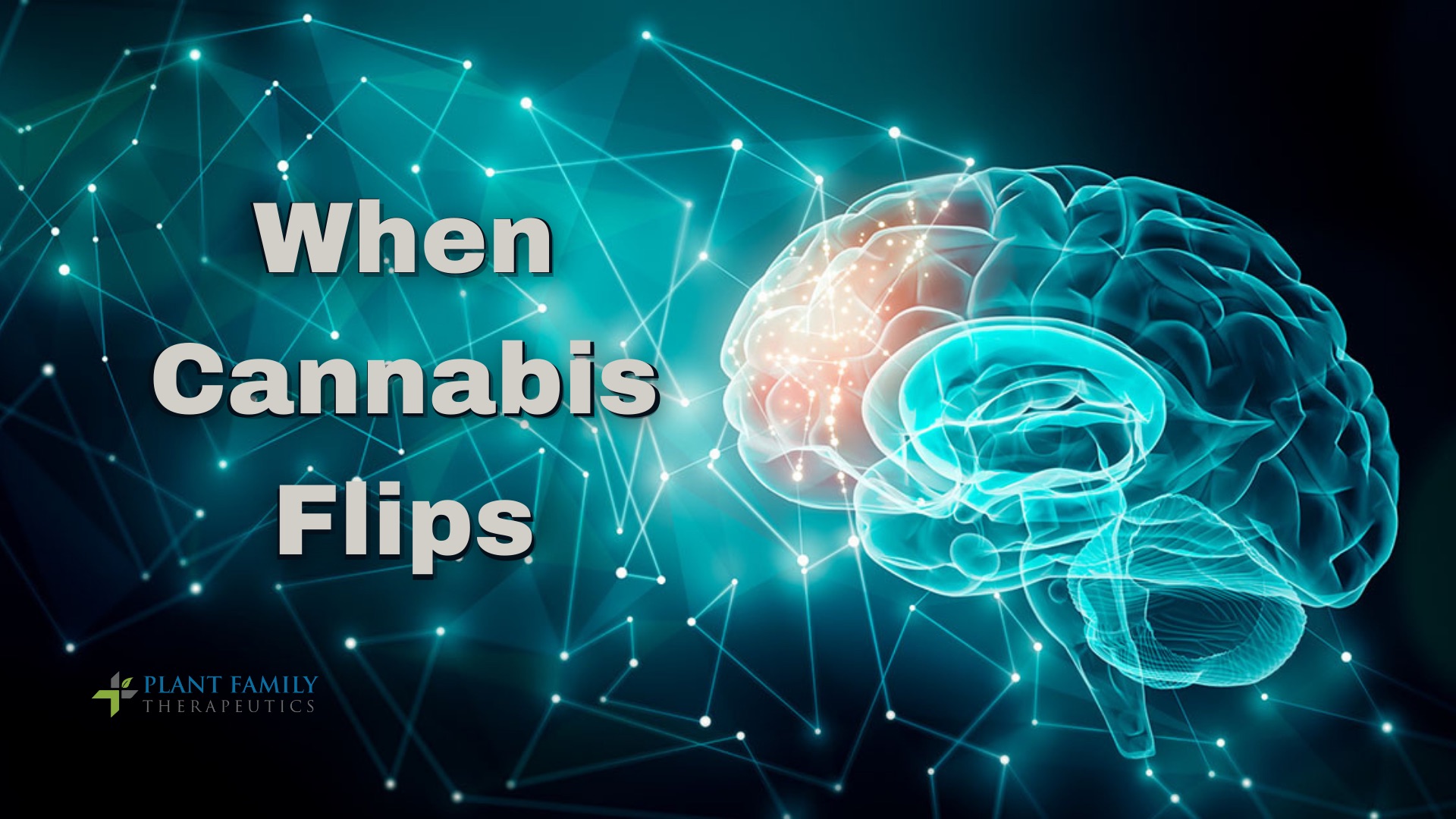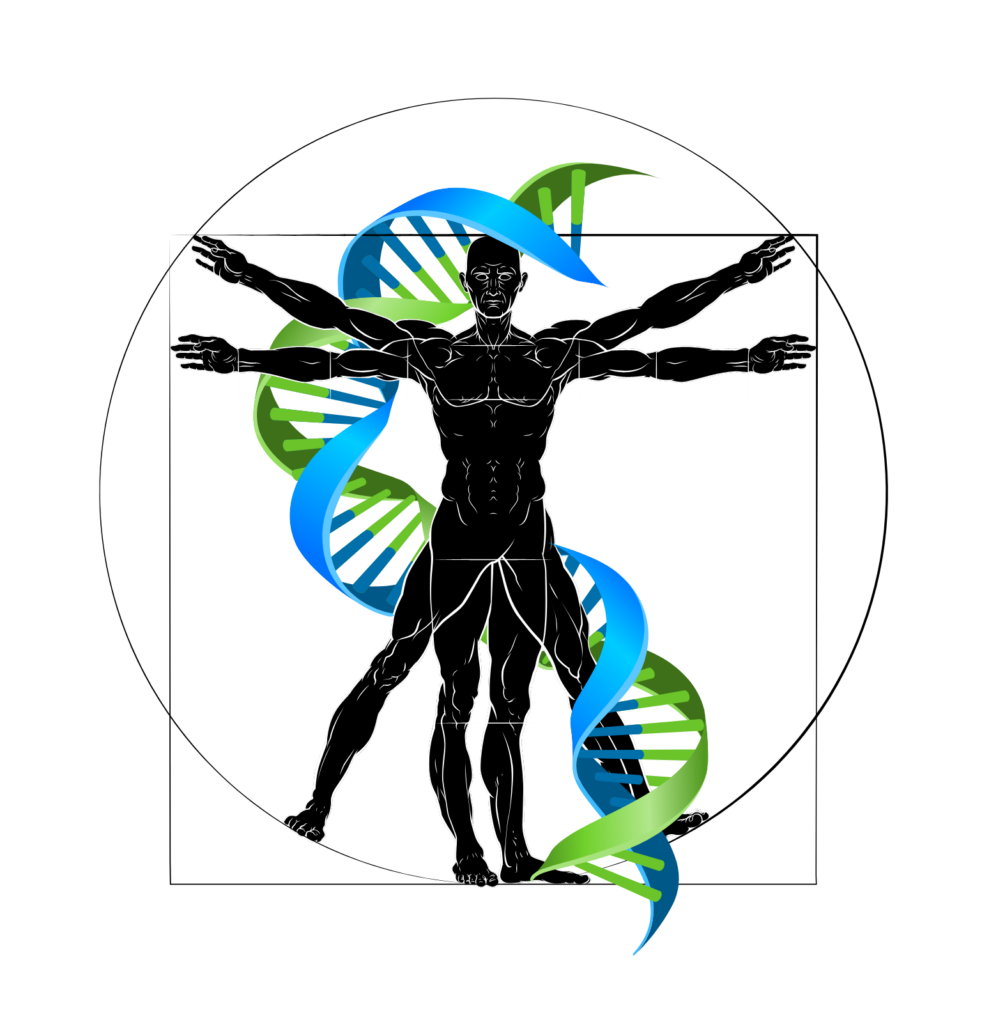This website requires you to be 21 years or older to enter. Please confirm your age below to continue.

March 2023 by Sandy Yanez
Your day is over, your head is aching from the stress, and you want nothing more than to sit and chill. You stop by the dispensary and purchase an indica to help you relax and get some rest. You roll up a fatty and take a few puffs to loosen up and unwind. But instead, you become anxious and your heart starts racing. Now you’re pacing around, mind racing, and in no way are you relaxed.
So, what happened? This is a more common question than most consumers know, and the answer may surprise you – it’s you, more so it’s your chemical makeup.
Unfortunately, this reaction is not typical, but it’s not uncommon either. One reason people may feel anxious while consuming cannabis is the THC – and not necessarily the level or percentage of THC, not even if it’s a Sativa. It is the chemical reactions that are going on inside the body, specifically the brain, which may be your culprit.
The neuro-chemical reaction of THC
Neurotransmitters are chemical messengers that carry messages between nerve cells (neurons) and other cells in the body. They influence everything from thought to movement. Neurotransmitters affect neurons in one of three ways: they can be excitatory (increase action potential), inhibitory (decrease action potential), and modulatory (affect several neurons at the same time and influence the effects of other neurotransmitters).
When we consume THC it binds to the brain’s cannabinoid receptors, releasing the neurotransmitters dopamine, serotonin, and GABA, which are inhibitory neurotransmitters, meaning they stop other neurons from firing or the message from continuing. An increase in GABA and serotonin activity inhibits norepinephrine. Reduced norepinephrine stimulates activity in the brainstem’s locus coeruleus and limbic forebrain, which are involved in alertness and stimulation. This activity in turn activates the sympathetic nervous system causing an increase in heart rate and the release of cortisol – a stress hormone – which we interpret as anxiety. While paranoia, on the other hand, may come from increased dopamine primarily in the limbic forebrain.
Genetic mutations
The genes in our DNA map our lives, as well as code functional proteins that influence our body’s responses. Different abilities, such as seeing, muscle contractions, or metabolizing cannabinoids can be coded by certain types of genes. When it comes to cannabis, these functional proteins are also known as receptors and enzymes that interact with cannabis and allow us to feel its effects. A person’s cannabis response depends almost entirely on these receptors and enzymes.

The CB1 and CB2 receptor sites are the main targets cannabis interacts with. Mutations within the CB1 receptors have been observed and so far research has identified 15 variations in humans, along with at least 7 mutations in the CB2 receptors, and there are also at least 11 mutations in the FAAH gene (an enzyme that breaks down our bodies’ naturally produced cannabinoid molecules). These mutations could have major health implications and are the subject of intense ongoing research.
The genetic changes that affect how we react to cannabis may already be there at birth, but they can also develop as a result of poor daily living.
Terpenes and their effects
First, I’d like to address the Sativa, Indica, and Hybrid myths. So-called sativa varieties commonly are considered more euphoric and stimulating while so-called indica varieties typically are considered stonier and sedating, while hybrids are a blend of different types of cannabis to give you a more balanced feeling.
Sativa and indica designations are terrible for predicting effect. What predicts the effect is the cannabinoid and terpene content of the cannabis variety. Terpenes are pharmacologically active essential oils that work with THC to create effects. Several so-called sativa-dominant varieties are high in myrcene, a sedative terpenoid. When THC is combined with myrcene it delivers a stony couchlock effect. Many sativas contain an entourage of stimulating terpenes, along with myrcene, so their effects start out racy and energetic, then as the variety is metabolized, the combination of myrcene with THC metabolites results in a crash.
Terpenes are aromatic compounds that give cannabis its smell and taste. Here is a quick look at a few terpenes that can affect neurotransmitters in the brain.
Pinene is a terpene and gives the aroma of pine. Pinene has the ability to modulate (adjust or alter) the neurotransmitter GABA, which in turn decreases anxiety-like behavior. Pinene also works by blocking acetylcholinesterase from breaking down acetylcholine, an important neurotransmitter that helps to relay signals related to attention, motivation, arousal, alertness, and skeletal muscle movement. This gives pinene a wide array of potential benefits from memory to physical improvements. Pinene also targets the serotonin and adrenergic receptors to produce antidepressant effects.
Limonene (lemony citrus aroma) is a terpene that modulates dopamine, GABA, serotonin, and other neurotransmitters to provide a decrease in anxiety-like behavior. Limonene has the ability to modulate the effects of the neurotransmitter acetylcholine (Ach) and the accumulation of amyloid plaque by inhibiting the two enzymes responsible for Ach degradation, which is a pathological characteristic of Alzheimer’s disease.
Linalool (lavender) can reduce anxiety by modulating the serotonin-1A receptors in the brain – reducing their binding potential so that levels of serotonin and related neurotransmitters increase, resulting in reduced anxiety. Linalool also interacts with the neurotransmitter GABA to calm the brain and nervous system, allowing you to feel more relaxed.
Too much THC intake
And the other likely cause is chronic overdosage of high-THC cannabis. When a user takes lots of high-THC cannabis all the time, levels of sedating THC metabolites build up and can be very fatiguing. Control dose and frequency of use to avoid this side effect.

However, varieties sold as both sativa and indica around the US have one thing in common: virtually no cannabidiol (CBD) content. It is a widespread misconception that indica cannabis in the US is higher in CBD. Landrace indicas bred for resin production in Asia and the Middle East are higher in CBD and the first broad-leafleted indicas brought back to the US in the 70s likely were higher in CBD, but today’s domestic indicas contain virtually no CBD.
CBD does not cause lethargy when combined with THC, but simply lengthens the duration of THC’s effect and takes its edge off. THC can provoke anxiety by itself, while the addition of significant CBD reduces that effect. CBD by itself is not psychoactive and most find CBD as “wake-promoting” as caffeine but without the jitteriness.
Take away
Cannabis has different effects on different people for different reasons. While we cannot say for certain until there is more extensive, unbiased research on the topic, the reason strains affect people differently is likely a combination of biochemistry, genetics, and terpenes.
Anyone curious to learn more about their personal cannabis response should study their family history. If you are searching for more cannabis education and information, visit the Plant Family Therapeutics website.
References
Baldinger, P., Höflich, A. S., Mitterhauser, M., Hahn, A., Rami-Mark, C., Spies, M., Wadsak, W., Lanzenberger, R., & Kasper, S. (2014). Effects of Silexan on the serotonin-1A receptor and microstructure of the human brain: a randomized, placebo-controlled, double-blind, cross-over study with molecular and structural neuroimaging. The international journal of neuropsychopharmacology, 18(4), pyu063. https://doi.org/10.1093/ijnp/pyu063
Eddin, L. B., Jha, N. K., Meeran, M. F. N., Kesari, K. K., Beiram, R., & Ojha, S. (2021). Neuroprotective Potential of Limonene and Limonene Containing Natural Products. Molecules (Basel, Switzerland), 26(15), 4535. https://doi.org/10.3390/molecules26154535
Ferber, S. G., Namdar, D., Hen-Shoval, D., Eger, G., Koltai, H., Shoval, G., Shbiro, L., & Weller, A. (2020). The “Entourage Effect”: Terpenes Coupled with Cannabinoids for the Treatment of Mood Disorders and Anxiety Disorders. Current neuropharmacology, 18(2), 87–96. https://doi.org/10.2174/1570159X17666190903103923
Hua, T., Vemuri, K., Nikas, S. P., Laprairie, R. B., Wu, Y., Qu, L., Pu, M., Korde, A., Jiang, S., Ho, J. H., Han, G. W., Ding, K., Li, X., Liu, H., Hanson, M. A., Zhao, S., Bohn, L. M., Makriyannis, A., Stevens, R. C., & Liu, Z. J. (2017). Crystal structures of agonist-bound human cannabinoid receptor CB1. Nature, 547(7664), 468–471. https://doi.org/10.1038/nature23272
Jarvis, G. E., Barbosa, R., & Thompson, A. J. (2016). Noncompetitive Inhibition of 5-HT3 Receptors by Citral, Linalool, and Eucalyptol Revealed by Nonlinear Mixed-Effects Modeling. The Journal of pharmacology and experimental therapeutics, 356(3), 549–562. https://doi.org/10.1124/jpet.115.230011
Lee, B. K., Jung, A. N., & Jung, Y.-S. (2018, July 1). Linalool Ameliorates Memory Loss and Behavioral Impairment Induced by REM-Sleep Deprivation through the Serotonergic Pathway. Biomolecules & Therapeutics. The Korean Society of Applied Pharmacology. https://doi.org/10.4062/biomolther.2018.081
National Library of Medicine NIH, National Center for Biotechnological Information. March 10, 2023. https://www.ncbi.nlm.nih.gov/clinvar/?term=CNR1[gene]
Russo, E. B., & Marcu, J. (2017). Cannabis Pharmacology: The Usual Suspects and a Few Promising Leads. Advances in pharmacology (San Diego, Calif.), 80, 67–134. https://doi.org/10.1016/bs.apha.2017.03.004
Song, Y., Seo, S., Lamichhane, S., Seo, J., et. al (2021). Limonene has anti-anxiety activity via adenosine A2A receptor-mediated regulation of dopaminergic and GABAergic neuronal function in the striatum. Elsevier, (83), 153474. https://doi.org/10.1016/j.phymed.2021.153474
Weston-Green, K., Clunas, H., & Jimenez Naranjo, C. (2021). A Review of the Potential Use of Pinene and Linalool as Terpene-Based Medicines for Brain Health: Discovering Novel Therapeutics in the Flavours and Fragrances of Cannabis. Frontiers in psychiatry, 12, 583211. https://doi.org/10.3389/fpsyt.2021.583211
Zimmerman, S., & Zimmerman, A. M. (1990). Genetic effects of marijuana. The International journal of the addictions, 25(1A), 19–33. https://doi.org/10.3109/10826089009067003